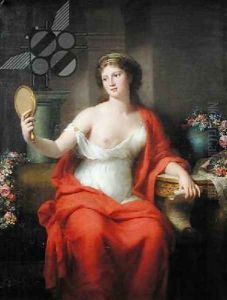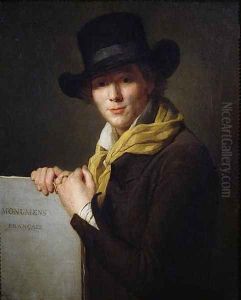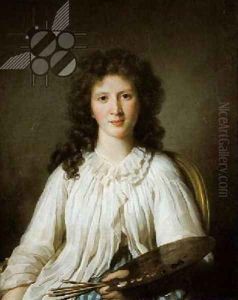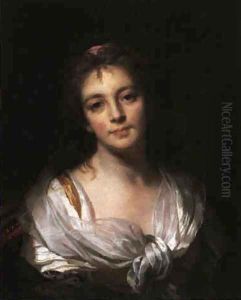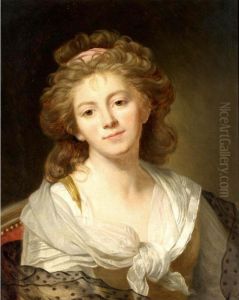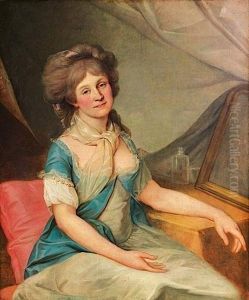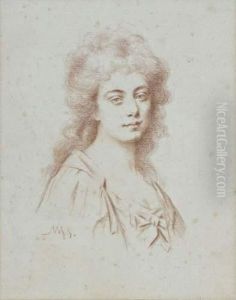Marie Genevieve Bouliard Paintings
Marie Geneviève Bouliard was a French artist known for her portraiture, born in 1763 in Paris. She emerged as a talented painter in an era when the art world was heavily dominated by men. Bouliard was a student of Jean-Baptiste Greuze and Joseph-Benoit Suvée, two prominent painters of their time. Under their tutelage, she honed her skills and embraced the neoclassical style that was prevalent in the late 18th century.
Bouliard gained recognition in 1783 when she exhibited her work at the Académie Royale de Peinture et de Sculpture in Paris. Her submission of a self-portrait, 'Aspasia', garnered attention and praise for its elegance and the skillful representation of the female form. This painting helped establish her reputation and signified her commitment to being recognized in the competitive art scene of Paris.
Throughout her career, Bouliard exhibited her paintings at the Paris Salon, the official art exhibition of the Académie des Beaux-Arts in Paris. Her works were noted for their sensitive portrayal of subjects and attention to detail, which was particularly evident in her treatment of textiles and clothing. Despite the challenges faced by female artists at the time, Bouliard managed to sustain a successful career. She painted portraits of many notable individuals, including aristocracy and members of the French bourgeoisie, which helped her to secure commissions and patronage.
Bouliard's life spanned a tumultuous period in French history, including the French Revolution and the Napoleonic Wars. These events inevitably affected the art world and the patronage system that artists like her relied on. She continued to work and adapt to the changing political and social environment, but like many of her contemporaries, she witnessed the transformation of the art scene in France.
Marie Geneviève Bouliard's contributions to portraiture and the art of her time were significant, and her work is still appreciated by art historians and collectors today. She passed away in 1825, leaving behind a legacy of artistic achievement that has helped to shed light on the capabilities and accomplishments of women artists in the 18th and early 19th centuries.
